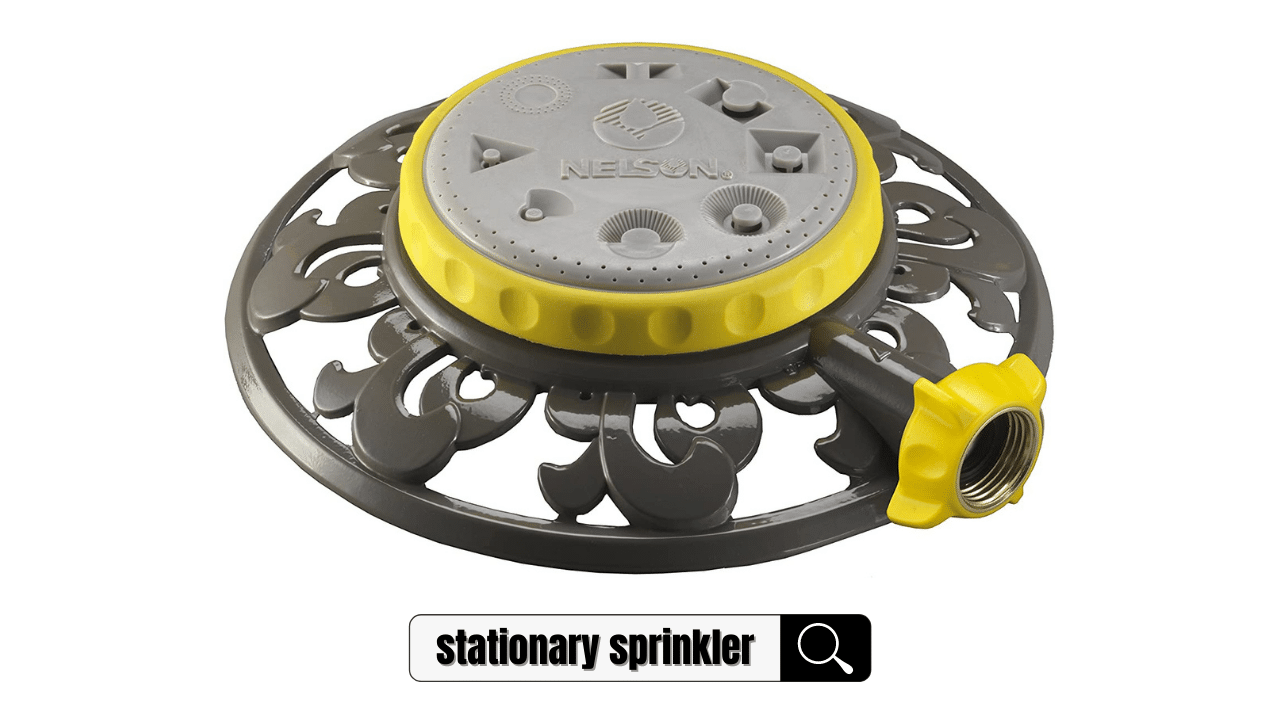To achieve the lush green lawn you desire, you need to ensure your yard is watered sufficiently. That said, there are several different sprinkler heads you can consider to provide optimal coverage.
Standard sprinkler heads can be divided into two primary categories: rotor heads and spray heads. Each one has different variations and sprinkler spray patterns.
Now, let’s dive deeper into the different types of lawn sprinkler heads to help you choose the right kind for your needs.
7 Types of Sprinkler Heads for Lawn Use
Different sprinkler heads have unique watering mechanisms, benefits, and setbacks. With that in mind, let’s discuss the various sprinkler head types along with their pros and cons.
1. Pop-up Sprinklers

Often called in-ground sprinklers, pop-up sprinklers are among the most common sprinkler head types. Many homeowners are fond of this sprinkler head because of its high efficiency. Pop-up sprinklers offer an even water distribution and spray, despite low angles.
It comprises an underground irrigation system with a sprinkler head that's slightly fixed underneath the ground surface. So, pop-up sprinklers rise from the ground when activated and go back underground once the system is turned off. It is perfect to use if you're a homeowner or you plan to stay in the property for a long time– given its expensive installation and stressful removal process.
Most suitable for any yard (regardless of size), gardens, and side yards.
Pros:
Cons:
2. Traveling Sprinklers

This refers to a specialized tractor sprinkler type that moves via the strength of the water pressure. However, it doesn't require electricity or gasoline to move around. It also doesn't need to be manually pushed. As such, it eliminates the stress of having to move around just to water the entire vast area strenuously. You can just let it drive around the yard and water the lawn for you.
Best suited for large lawn areas.
Pros:
Cons:
3. Rotary Sprinklers

Rotary or rotating sprinkler heads spray a continuous water stream in a circular pattern. It spreads the water more gradually than a standard spray sprinkler head. Given that its rotation speed can force the water farther than its usual reach, it is suitable for rather extensive-sized gardens. They are also ideal for lands that take a while in soaking up water, such as clay lands.
Most suitable for medium or large-sized lawns and side yards.
Important note: Most rotating sprinklers will require high water pressure– between 40 and 50 PSI.
These sprinkler heads stream water with less runoff and wasted water. Even strong winds also do not blow the water away that easily. Rotating sprinklers can be broken down into three main types. (Related: Selecting The Best Rotor Sprinkler Head For Your Yard)
Pros:
Cons:
4. Oscillating Lawn Sprinkler

Oscillating sprinklers consist of a long tube with several holes in the head. Although it takes a while to build sufficient pressure once turned on, it sprays water in a rectangular pattern once the pressure is enough. This is due to the pressure forcing the water to sway back and forth.
Pros:
Cons:
5. Stationary Lawn Sprinklers

True to its name, stationary sprinklers work in a fixed position– so they cannot move around. Its water sprays take on a specific pattern, but it may be sprayed in a full circle or half. It is suitable for lawns with straight edges, as they can be placed at the straight edge facing inside to spray a half-circle pattern.
As fixed sprinklers have less pressure than their rotary counterparts, they can only spray water in a small area at a time. Hence, these are ideal to use for small to medium-sized gardens. If your water pressure at home is weak, they work fine with it as well.
Pros:
Cons:
6. Misting sprinklers

Often called micro-sprinklers, misting sprinkler heads deliver tiny amounts of water per hour on smaller areas. These are recommended to use if you have plants at home that require delicate and more precise watering patterns, such as flower beds. It’s also suitable in areas with compacted soil.
Fortunately, misting sprinklers do not require high water pressure. Even low water pressure households can use these sprinkler heads at ease.
Pros:
Cons:
7. Sprinkler Hose

Some professionals do not consider a sprinkler hose part of the sprinkler head systems. But, we decided to include them in this list as they prove to be a blend of both hoses and sprinklers.
Generally, sprinkler heads can be attached to hoses to be sprayed across the lawn. They can be manually used or set at a particular angle to cover a small area. These lawn sprinklers do not have high pressure, so it's more fitting for flower beds or small pots. Use this if you only need small area water coverage.
Key Considerations Before Choosing a Sprinkler Head Type
You need to consider several factors in determining the best sprinkler type for your lawn.
Final Thoughts
Undoubtedly, different sprinkler head types are more suitable for certain situations than others. You may benefit more from a specific type of sprinkler head, especially ensuring you are spraying different amounts of water.
Your chosen type of sprinkler head will also determine the amount of water you can conserve on average, as well as the extra work you need to put in on your end. Each lawn sprinkler type has different costs and processes when it comes to installation, but we strongly advise hiring a local professional to ensure the job is done correctly. (Related: Sprinkler System Cost and Consumer Guide)
